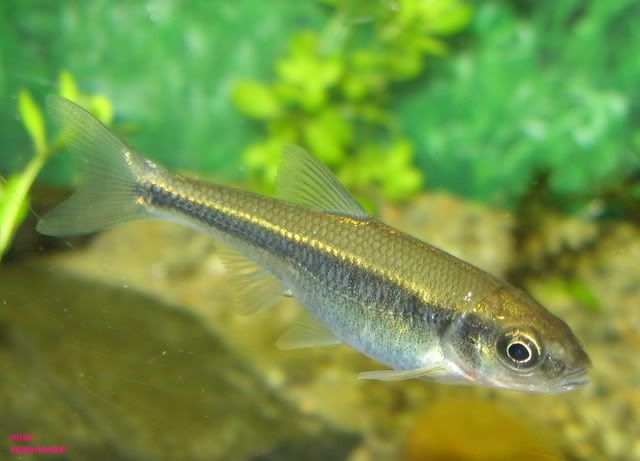Anyway, through the generosity of a member, I recently obtained some fish I had been wanting for years. Once I added them to my stream tank, I was so pleased with the results I just had to share. I appolgize in advance for the photo quality. I'm using a digital P&S and still haven't figured out how to over ride auto focus. Also, some of the smaller fish were enlarged digitally which hurt my res as well as accentuated the scratches in my very old tank.
Tank is 55 gallons and current is provided by two powerheads.

Most of the inhabitants are locally collected by me. Common shiners are one of the more colorful stream fish we have up here and great captives. They do eat alot though. Still, I love 'em.

Blacknosed dace are another old favorite. I've been keeping them in tanks on and off for over 30 years, I never get tired of them.

A species you might not associate with strong flows or freshwater is the four spined stickleback. I have two in my stream tank that I collected in September from a strong flowing spring fed brook that empties into Vinyard Sound on Cape Cod. Apparently it's not uncommon for the females and young to remain in freshwater after the breeding season has ended.

For color, I have a small brook trout parr.

Also I have a few tesselated darters that came from the same brook as the sticklebacks. This one is huge and pretty much rules the roast.

Those are the locals. Hope they're not too boring for you.







